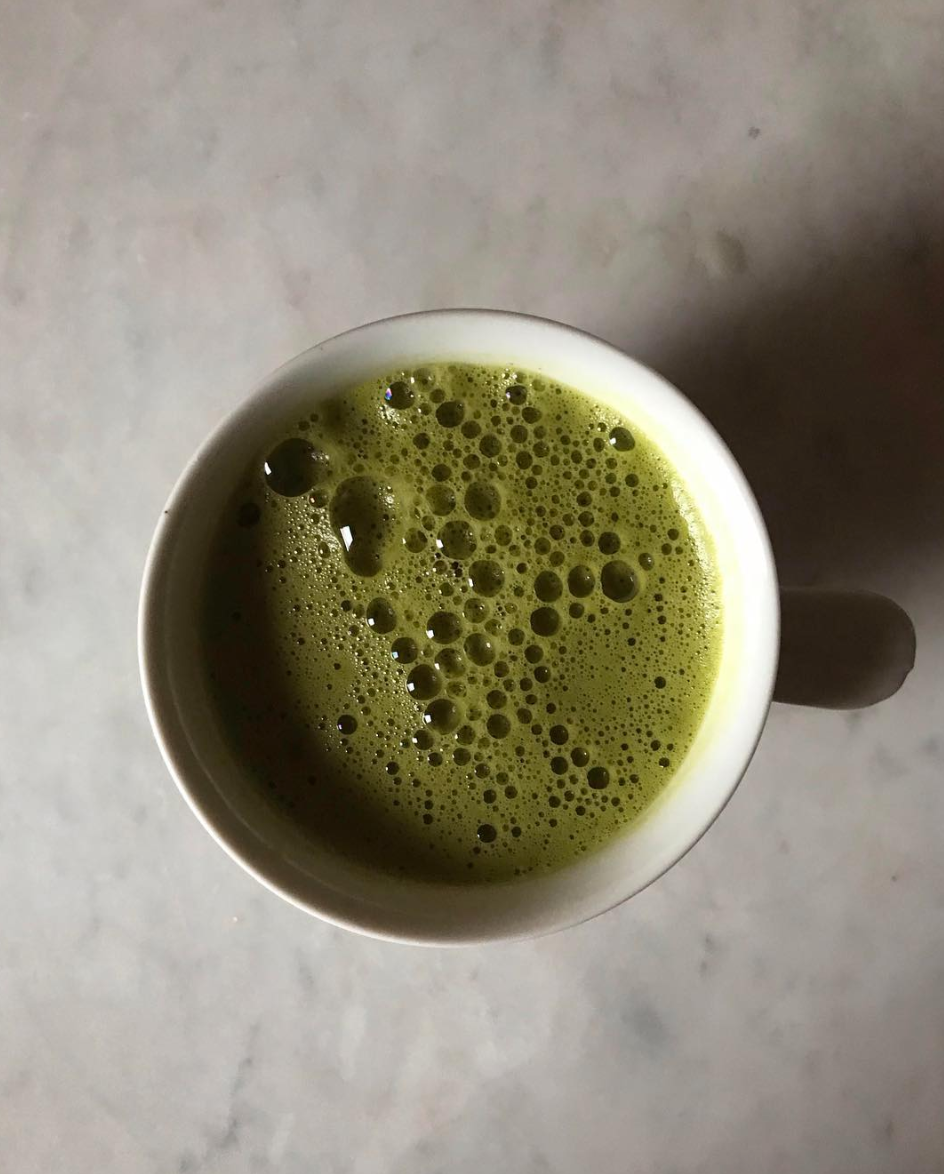THE MIRACULOUS BENEFITS OF GREEN TEA

As humans, our bodies are under constant attack from oxidative stress. The idea that it is important to be preventative against the everyday environmental stressors that affect the aging of the human body is not new. It has long been a fundamental aspect of a variety of holistic healing modalities. Enter: Green tea.
Green tea is made from the leaves of the tea plant Camellia Sinesis. The leaves contain certain bioactive compounds that affect the body in a variety of synergistic ways. These chemical compounds include polyphenols, amino acids, minerals, proteins, and carbohydrates. The polyphenols, in particular, are known for their free-radical fighting properties and are a key reason why green tea has been scientifically studied as a means of preventing the onset of disease. Free radicals cause damage to our cells, while proteins and DNA are linked with premature aging and certain cancers.
The polyphenols in green tea are broken down into two subcategories, catechins and flavonoids. Each plays its separate role in the protection of the body from the various oxidative stressors experienced daily.
- Catechins include epigallocatechin (EGC), epigallocatechin-3 (ECG), and epigallocatechin gallate (EGCG).
- Of these, EGCG, which accounts for approximately 50 to 70% of green tea’s total catechins makeup, has been highly studied for its role in cancer prevention. Studies have shown that EGCG dually targets cancer cells by blocking enzymes required for cell growth and signaling molecular pathway changes that trigger certain “pro-death” proteins that effectively cause the cancer cells to commit suicide.
- EGC stimulates enzymes that promote bone growth by 79 percent in animal studies through its ability to weaken the activity of cells that reabsorb bone rather than form new bone.
- Flavonoids protect the body in several ways. They are widely studied and known to have antioxidant and anti-inflammatory capabilities, but they are also anti-thrombogenic, antidiabetic, anticancer, and neuroprotective. The antioxidant qualities directly protect the brain from oxidative stress, which is the body’s way of “rusting,” so to speak. Epicatechin, a flavonoid found not only in green tea, but also in blueberries, cocoa and grapes, has been noted in animal studies to have the ability to affect blood vessel growth and improve memory. Epicatechin works to protect brain cells, as it is one of the few flavonoids that can cross the delicate blood-brain barrier.
Green tea has been found not only to reduce stress levels against the body, but science is slowly finding it has the same effect on the mind. Green tea leaves also contain L-theanine, an amino acid that impacts the release of neurotransmitters in the brain. It has a calming, sedative effect on the body without drowsiness. The presence of L-theanine in green tea also explains why most individuals can tolerate the caffeine content in green tea without the same jitters that the caffeine in coffee causes. L-theanine is thought to cross the delicate blood-brain barrier within thirty minutes. Over time, L-theanine has also been shown to improve sleep and fight insomnia. Despite its caffeine content, long term consumption of green tea in regular intervals throughout the day can actually have positive effects on sleep quality.
Different varieties of green tea are available throughout the world, depending on your location and preference. Sencha is the most common and is likely the type of tea you can find easily at your local grocery store in pre-packaged tea bags. Other types include:
- Gyokuro
- Kabusecha
- Matcha
- Tencha
- Genmaicha
- Hojicha
All types of green tea have the same benefits, but of these, matcha has gone most viral in recent years. Matcha green tea is highly concentrated—the actual green tea leaves are specifically grown for the production of matcha green tea. They are typically shaded for two weeks to increase chlorophyll levels before they are picked. The leaves are then ground, allowing for increased nutrients compared to steeped tea.
The average cup of tea contains approximately 20 milligrams of caffeine. Decaffeinated green tea has become more readily available, but be mindful of your choices before heading out to the store! The “Effervescence” decaffeination process is preferred. This process retains over 90% of polyphenols, while other methods use solvents that can cause a loss of up to 70% of polyphenols.
When it comes to green tea, preparation matters, the polyphenols in green tea leaves are highly sensitive to temperature changes. For this reason, iced and instant teas tend to have much lower amounts. Brewing the tea leaves above 180˚ F can also damage the polyphenols. Small leaves tend to infuse faster than large leaves.
Available evidence supports the idea that daily green tea consumption acts as a preventative against overall cancer risk without worrisome side effects. Experts recommend three to four servings per day to reap the full anti-aging benefits of green tea. Organic loose leaf green teas are available and it’s best to source a brand that’s made in Japan. Pre-packaged tea bags can be found readily in most stores. Always be sure to choose a high quality, certified organic brand. Read labels to make sure the tea leaves are unadulterated with added fillers and don’t be afraid to contact your favorite brands for more information on their sourcing. Be your own best advocate! An ounce of prevention is worth a pound of cure.
By Maria Villaman
***THESE STATEMENTS HAVE NOT BEEN APPROVED OR REGULATED BY THE FDA. WE ARE NOT DOCTORS, THEREFORE ALWAYS CONSULT WITH YOUR DOCTOR FIRST





